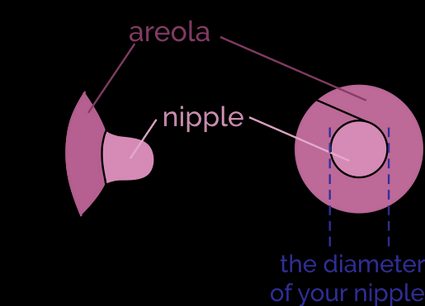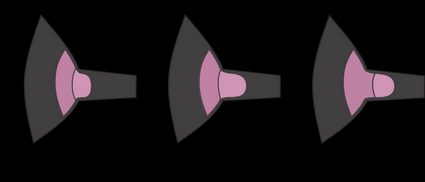Flange Size Calculator
Are you planning to use a breast pump? Take a moment to use this flange size calculator and find the diameter of your perfect flange. By using the correct size flange, you may decrease the risk of some complications, such as pain, abrasions, and discomfort, while pumping breast milk. In the following article, there is information on the nipple size measurement technique, breast pump flange size differences, and the uses of a breast pump flange.
We try our best to make our Omni Calculators as precise and reliable as possible. However, this tool can never replace a professional doctor's assessment. All information on this website is for informational purposes only and is not intended to serve as a substitute for medical consultation. Always consult your results with a health care provider.
Breast pump flange purpose
The breast pump flange is a funnel-shaped piece of plastic that is placed onto your nipple during pumping. We also know it as a breast shield, and it allows a vacuum seal to be formed. This causes milk to be drawn from your breasts and delivered through the flange to the pump.
While the average flange is between 24 and 27 millimeters (0.95-1.06 in) wide, nipple size can vary significantly. The correct flange size prevents nipple damage and allows the pump to extract the milk efficiently. Nipple damage may lead to painful duct blockage, which is especially common in women just after a baby's due date.
With this flange size calculator, you can prevent these unwanted situations from happening.
How to measure your nipple size?
As we mentioned before, a correct breast pump flange fit allows milk to be easily pumped and prevents bruises, cuts, and other damage to the nipple. To measure your nipple, take a ruler or a measuring tape and check your nipple diameter (without the areola).

Breast pump flange size
A typical flange should be 3-4 millimeters larger than the nipple's diameter, and the average flange diameter is between 24 and 27 millimeters. However, due to the great variety of nipple sizes, you can find flanges measuring up to 40 millimeters on the market, so you should be able to find the best breast pump flange fit.
How can you tell if the flange size is not correct? There are some symptoms that should alarm you. Just so you know, all of them can also be a sign of mastitis, blockage of ducts, or any minor problem with breastfeeding, and are not necessarily problems caused by the flange itself. You should be alarmed by:
- Pain in your nipple;
- Some parts of areola inside the tunnel of the breast pump;
- After pumping, you feel that there are still areas with milk inside; and
- Your nipple is stuck inside the flange and cannot move freely.
🧑⚕️ In this part, we consider it important to remind you to keep practicing regular breast self-checks during breastfeeding to check if there's breast cancer risk. If anything seems worrisome, go to your physician for a breast ultrasound.
How to use flange size calculator?
For the perfect breast pump flange fit, start measuring your nipple with a ruler or tape (do not measure the areola!). Then put your measurement into the tool and wait for the results. The correct flange diameter is 3 to 4 millimeters larger than the nipple. For example, if your nipple is 19 mm in diameter, then the perfect flange is 22-23 mm.
If you're still not sure, check out the image below this breast pump flange size calculator. It shows how big the flange should be when compared to the nipple.
What is a breast pump flange?
A breast pump flange is the plastic component that creates a vacuum seal around your nipple and allows the comfortable use of a breast pump. A flange covers entirely or partially the areola and allows the nipple to be sucked and released during the pumping. A good fitting of your flange is fundamental for your comfort.
How do I calculate the right fit of the breast pump flange?
To calculate the best fit of the flange for your breast pump, follow these easy steps:
- Measure the diameter of your nipple in millimeters.
- Add 3 or 4 millimeters to the value you measured: this is the right size of the flange.
- Search for the flange with the closest diameter to the one you found above.
What are the signs of a wrong size of breast pump flange?
Some noticeable details signal a poor fit of your breast pump flange:
-
Your nipple is compressed in the flange tunnel: the flange is too small.
-
Part of the areola is sucked in with the nipple: the flange is too large.
-
The nipple is sore and red: the flange is too small.
-
The areola has marks and is sore: the flange is too large.
A bad fit causes painful expression, irritation, and soreness. Be sure to find the best fit for your needs.
Which flange should I buy if my nipple is 23 mm in diameter?
If your nipples measure up to 23 mm in diameter, choose a flange with a diameter of 27 mm or 28 mm. This choice will ensure the best fitting and allow you to pump without pain and soreness. Remember to try your flange: you may notice that the suggested size is not the best for you!
